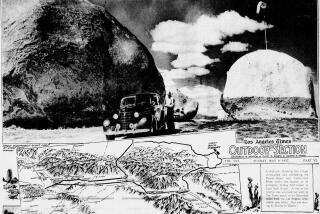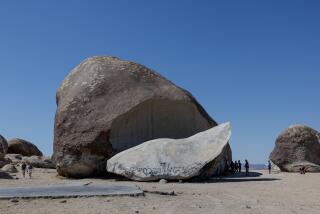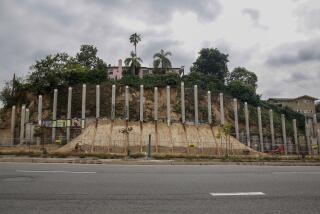THEN & NOW : Eagle Rock--A Solid Fixture in the Community
The Eagle Rock overlooking the community named for it was a landmark long before cars went whizzing past on the 134 Freeway.
Legend has it that there was an Indian village on the 200-foot-high rock, but historians agree the village was probably south of where the freeway is now.
Local historians say Father Francisco Garces was the first European to see the rock, possibly camping there in April, 1776. In 1784, the rock area was claimed by the Verdugo family as part of the San Rafael land grant from the king of Spain, and the rock was known as the Piedra Gorda, or fat rock.
Itâs hard to say exactly when the first permanent structures were built below the rock. Eagle Rock resident and local historian Henry Welcome, 75, thinks it was about 1883.
Welcome said Piedra Gorda was renamed near the turn of the century by Cromwell Galpin, a farmer from Eagle, Wis., who, perhaps inspired by his roots, saw the eagle image. âThe Spanish never saw the eagle,â Welcome said.
By 1909, the community was well established, and it incorporated as a city in 1911.
After World War I, Eagle Rock grew so fast that water became a problem, and in 1923 residents voted to be annexed by the city of Los Angeles.
Welcome moved to Eagle Rock in 1927, when he was 11. He recalled camping next to the rock and exploring the two caves at the rockâs base. âIt was quite a scramble to get into that upper one,â he said.
Today, the stream that ran next to the rock is an underground storm drain, and the rock is owned by a developer. The city of Los Angeles has been trying to buy the property to preserve the land as a park, said Diego Cardoza of Los Angeles Councilman Richard Alatorreâs office.
More to Read
Sign up for Essential California
The most important California stories and recommendations in your inbox every morning.
You may occasionally receive promotional content from the Los Angeles Times.










